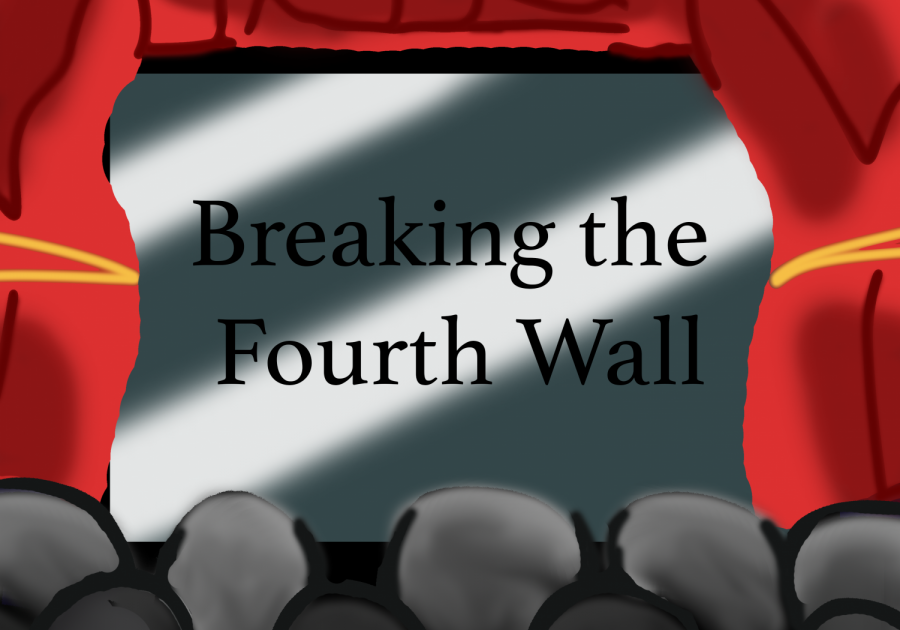Batman vs. Spider-Man
An analysis on the stresses of being a hero versus a myth
February 12, 2021
Batman and Spider-Man are arguably comics’ two most recognizable characters. Both are victims to crime and become masked vigilantes to process their loss and seek vengeance for it. Batman is a myth created to strike fear into criminals, while Spider-Man is a hero meant to generate hope in the common folk. The characters are very similar in the broad sense of what they are and what created them, but once juxtaposed, the reader sees the differences in their role, drives and the struggles they face while maintaining their two lives. In his book “Super Heroes: A Modern Mythology,” Richard Reynolds proposes that superheroes in comic books today share many similarities with mythology of old. Tales of heroism are performed by supernatural people, and it is up to the characters to decide whether they fall under myth or role model.
Superhero origin stories are integral to the motivation and culmination of the character in their acts as a superhero. Batman was created when his parents were gunned down in an alley. He then vowed to avenge them by fighting crime and used his money and resources to train for and become a vigilante. The Batman is a bedtime story told to the citizens of Gotham to instill fear of repercussions for evil actions into them. Batman’s war on crime has lasted over eighty years in real time with no end in sight, and yet he continues despite its seeming futility. This has lead to a discussion to determine whether Batman truly is a symbol, or a man.
Using real life logic, the writers cannot let Bruce Wayne retire or be permanently replaced by a younger and unique character. The widely-known standard of the character is that of Bruce Wayne, the wealthy socialite with a brooding temperament. Even if decades upon decades have exhausted every worthwhile and original story they have for the character, they cannot give up their revenue-earner by allowing the story to progress past the status quo. A single film would allow the character to have a beginning, middle, and end; Batman gets no narrative conclusion, with his future in a constant loop between venturing into freedom and being hit with the hard reality of duty. By the writers’ refusal to let Bruce move on past childhood trauma and give up the Batman mantle, the readers have to see past the obvious reality and recontextualize this never ending pattern within the story, seeing him in a new light: either that of a symbol that transcends the story of one man and instead becomes the very myth that he strives to become in fiction, or that of a lonely child who never quite grew up or managed to recover from his trauma.
Batman as a symbol is explored in media such as “Batman Begins,” “Mask of the Phantasm” and “Arkham Knight.” In “Begins,” he forges the symbol and cuts himself off from others in an attempt to create the myth. “Dark Knight’s” finale has Bruce sacrificing himself as a person to alter the meaning of the symbol that is Batman. Instead of being a source of fear and paranoia for criminals, he becomes the scapegoat for Harvey Dent’s actions in the eyes of the people. “Dark Knight Rises” further has him ultimately abandoning Batman once he saves the city a final time, settling down with Selina Kyle to live the normal life he has never received in any other media. Though he sacrifices so much of himself to become more than a man, he has never been granted any recompense as Bruce Wayne. “Mask of the Phantasm” has Bruce learning early on in his career just what the myth of Batman asks of him—his happiness. After receiving supernatural signs protesting to his relationship with Andrea Beaumont, he resigns himself to his solitary life. “Arkham Knight” sees a seasoned Batman once again fighting a seemingly endless tirade of crime and cruelty, finally facing an opponent and situation that Bruce Wayne as Batman cannot defeat himself. He gives up his secret identity and truly becomes the Bat, unhindered from conceptions of him as a man and is seen as the symbol itself.
On the other side of the coin, Batman is the product of an eight year old Bruce Wayne’s trauma one fateful night. He makes a promise to his parents to give himself over to fighting what he felt took their lives—crime. In “Mask of the Phantasm,” Andrea tells Bruce that “the only one in this room controlled by his parents is you.” Every decision he makes in that film is tied directly to the promise he made his parents. More recent years in the comics paint his role as Batman as a form of punishment for himself. Becoming a vigilante and fighting crime would not be considered a healthy coping mechanism for a normal person, yet that is essentially what Bruce uses Batman as.
Bruce faces an uphill battle as he struggles to maintain Batman while neglecting his life as Bruce Wayne. Such dark and repetitive stories of this self-destructive behavior becomes tiresome over time and lends itself to the well of new stories drying. If Batman insists on a life of separation between his identities, yet does not maintain his secret identity as a character within itself, then that character is a useless one. If he became nothing but the myth, the genre of the series would change completely, becoming a supernatural story. It could, however, be argued that Bruce Wayne the socialite is not a true character but that the Bruce Wayne he is when interacting with members of his family and allies is the true secret identity of Batman. This version of himself attempts to maintain relationships with several close allies while being an entity separate from the legend of the Bat and the facade of the rich boy. However, only his extremely close friends see this version of him, and even this side of himself is often sacrificed in favor of serving as Batman.
Peter Parker, on the other hand, experiences an equal yet opposite relationship with his role as Spider-Man. Unlike Batman, Spider-Man is a “friendly neighborhood” sort of vigilante, with his easygoing and caring disposition that inspires hope in others despite the Daily Bugle’s negative press that objects otherwise. His origins are of a nerdy teenager who gains superpowers and immediately uses them selfishly to earn money. Once his actions—or rather, inaction—lead to his Uncle Ben’s death, he has a change of heart and becomes a crime fighter. Instead of leading a war on crime in vengeance as Batman does, though, Peter’s battle is instead to do good and protect those that otherwise do not have the means to protect themselves. He resolves that “with great power, there must also come great responsibility.” He sees his powers as a gift that he is consequently given the responsibility, or obligation, to use to defend others.
When Peter becomes Spider-Man, he adds another layer to his personality and treats it as a job rather than a lifestyle that demands a dramatic level of sacrifice. That is not to say that he does not make sacrifices in his personal life in favor of Spider-Man. Spider-Man is a moral code for Peter, a role that he chooses to act as; as previously stated, Bruce sees Batman as something he makes limitless sacrifices for to become something else that a normal man cannot, and a symbol that he ultimately has no choice in becoming. When Bruce meets a conflict between his responsibilities as Bruce Wayne and Batman, he automatically yields to his responsibilities as Batman, without question. Peter’s choices in this type of situation often vary due to how serious a situation is or how important his personal obligations are. He may skirt on his responsibility as Spider-Man when the situation is minor or can be postponed in favor of fulfilling his responsibilities as Peter. However, he does ultimately choose to make personal sacrifices to save the city when it is asked of him. Peter is faced with a merciless amount of these decisions, having to constantly choose between his two lives. While Peter has a long list of allies and reliable friends, he himself is seen by them as unreliable, which strains his relationships. Just as Bruce can’t accept happiness in his life without giving up his vow, Peter cannot in good conscience dismiss the people who need his protecting. Bruce never gets a choice, while Peter chooses heroism regardless.
The relationship each hero has with their own rogues gallery helps define the hero within their established thematic rules. Batman’s villains are often born twisted, with it taking merely a little nudge for them to embrace their true nature. Spider-Man’s enemies are full of good people who were victims of poor treatment and unfortunate circumstances and end up succumbing to a dark path. Several of the villains for each hero were once close friends or allies who end up being turned dark. The rogues galleries are full of villains who are dark reflections of the hero, people that the hero is one wrong step away from becoming. The writing posits that Batman is an unstable man who can easily give into his dark urges, just as Peter is often victimized by the society he lives in. The characters’ cores are even further scrutinized when pitted against their arch enemies. The Joker is an entity of chaos created to rival an entity of justice, while the Green Goblin is a man with a personal history with and agenda against Peter Parker. Batman is once again a symbol combatted by other symbols, and Spider-Man is a man using his own power with good intentions while another man seeks personal vendetta against him. Batman is rivaled in his vigilante life as a symbol, and Spider-Man is rivaled by people he knows who utilize tactics meant to harm both Spider-Man and Peter Parker.
Variety in comic books is plentiful; it is hard for there not to be when there are so many characters with potential for so many different stories. Batman and Spider-Man are both prominent figures that follow a similar outline, but the tone and motives for each character strike the difference in each. This is how you create two characters who oftentimes face the same conflict, yet are plunged into vastly different consequences. They tell the readers a story of humanity and sacrifice, while also transcending the story to become the symbol they represent. A legend meant to strike fear, and a man meant to bring hope.





